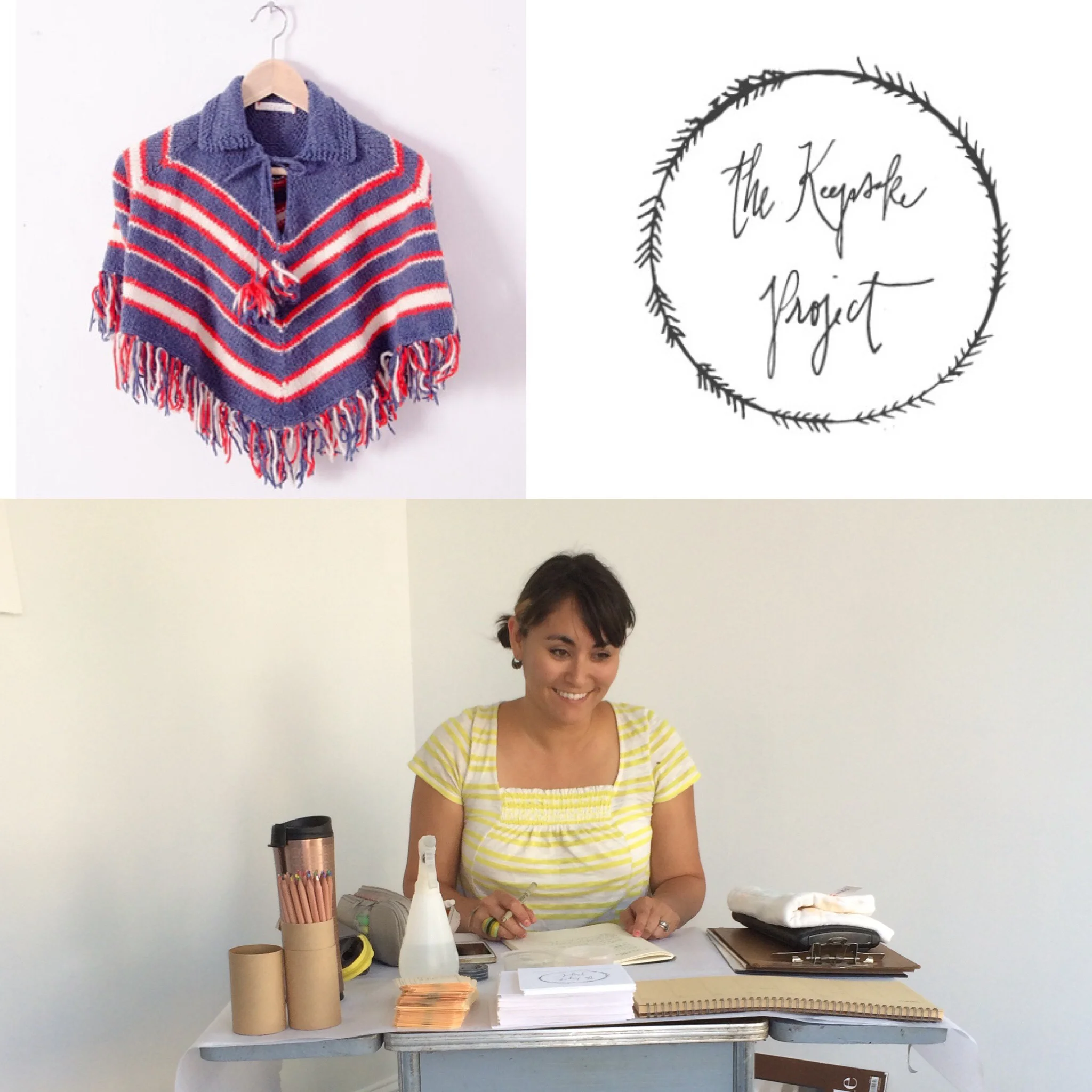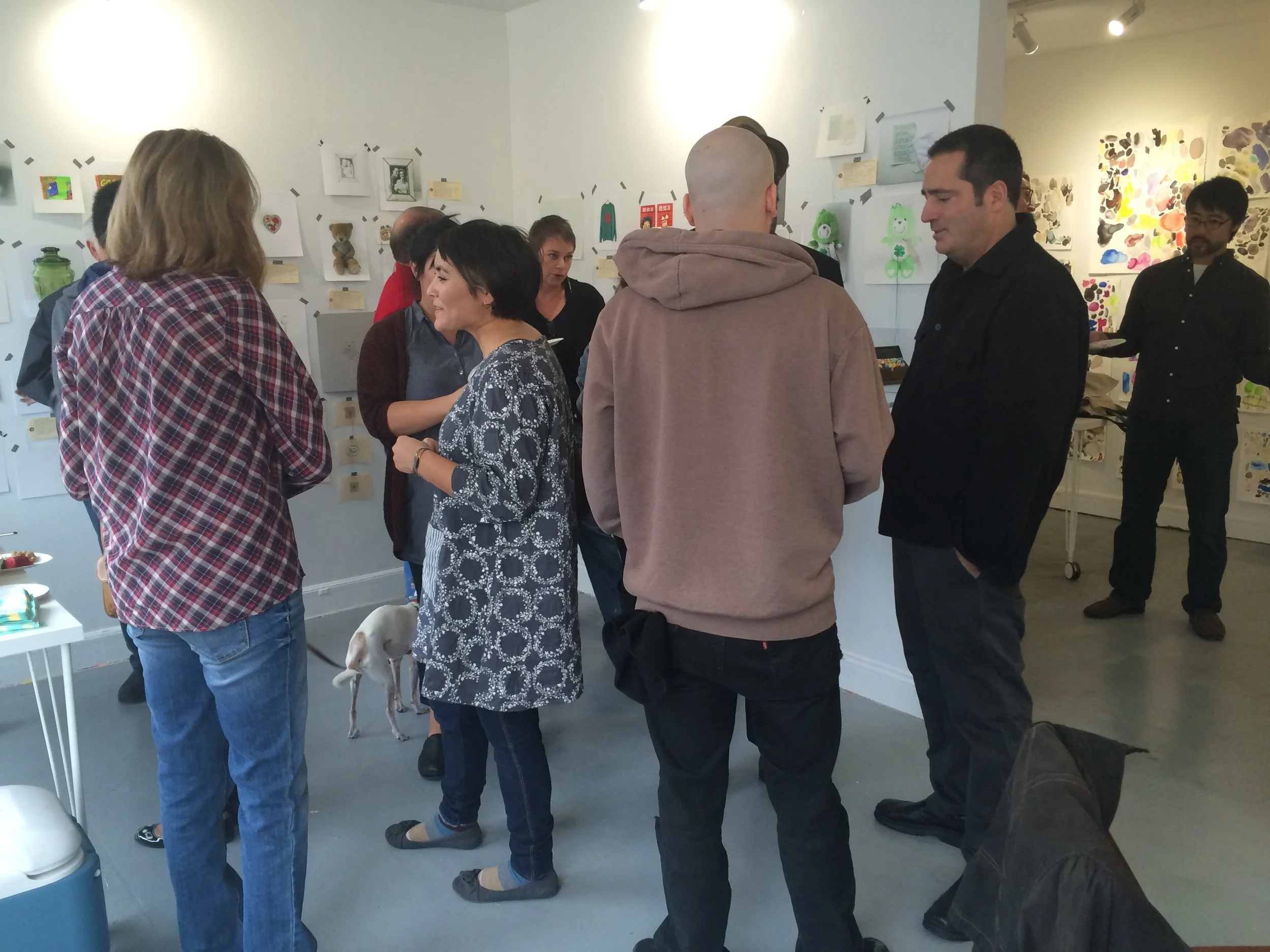Lisa Solomon | The Keepsake Project
September 1 - November 30, 2015
Lisa Solomon's studio practice revolves thematically around domesticity, gender roles, and the pursuit of art as research, incorporating materials that intentionally question the line between art and craft.
During the course of her three-month residency at ISP, Solomon documented keepsakes, those cherished objects that we hold on to for a variety of sentimental reasons. She invited the public to participate by either booking an appointment to have a keepsake photographed and drawn at the gallery, or by sending an image of their chosen object via email. The documentation progressively filled the walls with nostalgic mementos culminating in an exhibition, a website, and now a correlating book.
By the time she completed the residency, 65 keepsakes were documented through photography, drawing, and transcribed personal accounts of the objects’ significance to their owners. Solomon’s documentation of pieces of clothing, bric a brac, stuffed animals, jewelry, tools, handwritten notes, toys, and other ephemera paid tribute to these odd knick-knacks that often carry a huge amount of emotional weight, and can sometimes hold cultural significance as well.
As the documentation accumulated, we noticed threads of commonality in the stories: the love of a grandparent or close relative, a physical connection to childhood, the honor of a cherished family member’s skill, memories of significant moments in life. It became clear that these objects function as portals to parts of our human experience we can’t fully access without a trigger. So many of life’s details and emotions fade with age – thankfully - but these objects somehow carry the emotional weight that dissipates with time. Though the transfer of emotion to inanimate objects can get out of hand and become overwhelming, some things are worth holding onto and contemplating.
What Solomon has begun to create is a type of alternative museum. While a traditional museum seeks the “best” examples of cultural production to showcase to the public, we rarely get to know the stories behind these objects, their acquisition, or their emotional significance. These aspects are virtually erased and replaced by origin stories and explanations of why a particular object is deemed the best, most significant, most valuable example of its kind. The Keepsake Project is the antithesis of that format, a place to celebrate the distinct yet fleeting moments in life that shape our respective paths and help narrate our personal definition of our place in the world.
See the objects documented and read their stories at www.thekeepsakeproject.tumblr.com
Press:
SFArts Monthly









